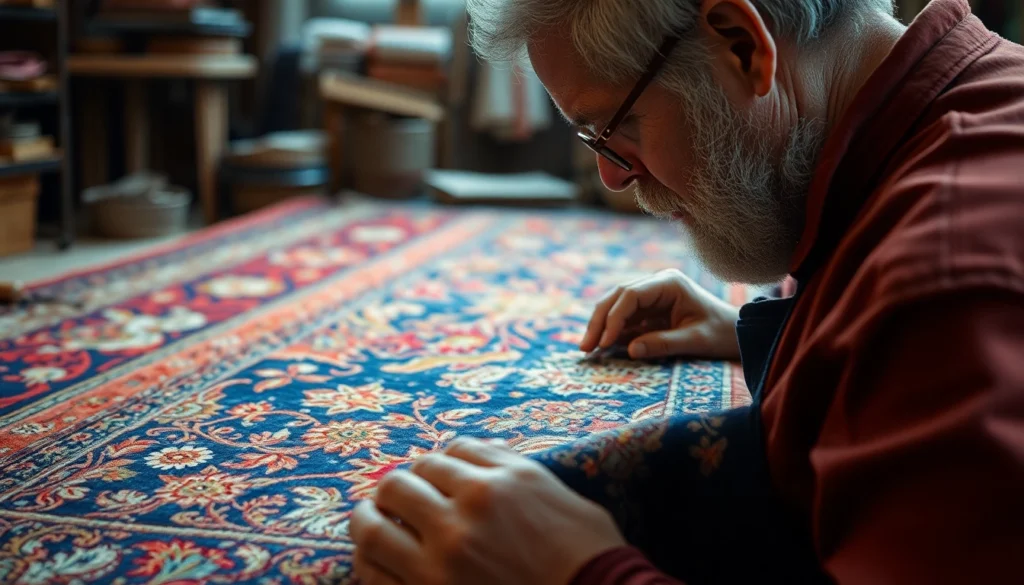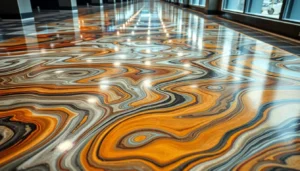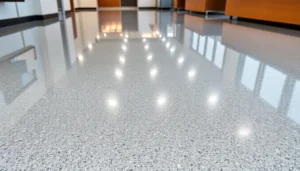Expert Restauro Tappeti Milano: Preserving and Restoring Fine Oriental and Modern Rugs

Introduction to Restauro Tappeti Milano: Why Professional Restoration Matters
Owning a beautiful, authentic Restauro Tappeti milano is a cherished investment that can greatly enrich the aesthetic and cultural value of your home or office. Over time, however, even the most well-maintained rugs are subject to wear and tear, damage from environmental factors, and the inevitable dwindling of their vibrant colors and intricate designs. Professional restoration in Milan becomes essential not only to preserve their beauty but also to safeguard their historical and monetary value. This comprehensive guide explores the significance, techniques, selection process, costs, and maintenance tips related to professional tappeti restoration in Milan, empowering you to make informed decisions that will extend the life of your treasured carpets.
Understanding the Value of Restoring Antique Tappeti
Antique and high-quality modern carpets are more than just floor coverings—they are works of art, cultural artifacts, and heirlooms passed down through generations. Restoring these rugs involves more than superficial cleaning; it requires an artisanal touch that respects the original craftsmanship. Antique tappeti restoration enhances durability, restores vibrancy, and often increases the aesthetic and monetary value of the piece. Proper restoration can turn a damaged or faded rug into a stunning centerpiece, retaining its historical significance and ensuring it remains a treasured asset for future generations.
Furthermore, restored rugs contribute significantly to interior design by adding authentic character and warmth. Internationally recognized restoration technicians utilize age-old techniques coupled with innovative methods, ensuring high standards of quality and authenticity. In Milan, a city renowned for art, culture, and luxury craftsmanship, expert restoration services like those offered by Restauro Tappeti milano are essential for discerning clients seeking to preserve their valuable collections.
Common Damages and Restoration Solutions
Types of Damage in Tappeti
Over decades, carpets can suffer from various damages, including:
- Physical tears and holes: Resulting from accidents, animals, or age-related fabric deterioration.
- Fading and discoloration: Due to exposure to sunlight, improper cleaning agents, or environmental factors.
- Fringe deterioration: Fringes can become frayed or torn, affecting the overall appearance.
- Stains and spots: From spills, pet accidents, or mold growth.
- Warping and reshaping: Caused by improper storage or exposure to moisture.
- Abrasion and wear: From foot traffic leading to thinning or threadbare areas.
Restoration Techniques for Different Damages
Addressing these damages requires tailored techniques:
- Reweaving and patching: Skilled artisans reweave damaged areas or patch them with matching fibers, restoring structural integrity.
- Coloration and dyeing: Restoration experts apply natural or synthetic dyes to revive faded colors, matching original hues precisely.
- Fringe repair and replacement: Fringes are either sewn back or replaced with similar materials, maintaining authenticity.
- Deep cleaning and stain removal: Using specialized techniques like hand-washing with gentle, eco-friendly solutions to eliminate stubborn stains and mold.
- Reshaping and stabilization: Moisture and gentle shaping methods are used to correctly restore warping and structural problems.
Each damage requires a careful assessment and customized approach to ensure the restoration process respects the original craftsmanship and material composition.
The Benefits of Expert Restoration Services
Choosing professional ttlppeti restoration offers multitudinous advantages:
- Preservation of Cultural and Artistic Value: Expert restorers understand the historical significance of different weaving techniques and materials, ensuring authenticity is maintained.
- Extended Lifespan: Proper restoration halts further deterioration, thus prolonging the usable life of your rug.
- Enhanced Aesthetics: Restored colors, shape, and structure elevate the appearance of your tappeto, making it a focal point of any space.
- Increased Market Value: Well-restored rugs often fetch higher prices in the resale market, especially antique or designer pieces.
- Protecting Investment: Restoration safeguards the monetary and sentimental value of valuable collectibles.
Not all restoration methods are equal; professional artisans employ delicate handling, precise techniques, and high-quality materials to achieve outstanding results. Their expertise minimizes risks such as color mismatch, further fabric damage, or over-restoration, which can diminish your rug’s value.
Restauro Tappeti Milano: Techniques and Best Practices
Traditional and Modern Restoration Methods
Milan-based restoration studios combine time-honored craftsmanship with cutting-edge technology. Traditional methods include hand-knotted re-weaving, natural dyeing, and manual cleaning, honoring centuries-old practices. Modern techniques involve digital analysis for color matching, chemical stabilization of delicate fibers, and laser cleaning where appropriate. This hybrid approach guarantees high-quality, durable, and authentic restorations aligned with the specific needs of each rug.
Choosing the Right Restoration Approach for Your Tappeto
In selecting restoration techniques, professionals evaluate factors such as the rug’s age, origin, materials, damage severity, and intended use. For example, an antique Persian rug with intricate knotting requires a delicate reweaving approach, whereas a modern machine-made rug might be cleaned or repaired with less invasive methods. Consultation with an experienced restorer ensures the most suitable, minimally invasive, and cost-effective solution.
Materials and Equipment Used by Professionals
Quality restoration relies on specialized tools and materials, including:
- Traditional natural dyes derived from plants and minerals
- Fine silk, wool, or cotton fibers matching the original material
- Handmade reweaving needles and frames
- Eco-friendly cleaning solutions tailored to delicate fibers
- Advanced laser and ultrasonic cleaning machines for deep purification
Using such high-grade resources ensures the restoration process respects the integrity of your tappeto while achieving optimal results.
How to Select a Trusted Restauro Tappeti Milano Expert
Key Factors for Choosing a Restorer
Choosing the right professional involves assessing multiple criteria:
- Experience and specialization: Look for restorers with extensive experience, especially in antique and oriental rugs.
- Reputation and reviews: Client testimonials and industry reputation serve as quality indicators.
- Portfolio of previous work: Review sample restorations to gauge skill and style compatibility.
- Certifications and associations: Memberships in professional bodies enhance credibility.
- Transparency and consultation: Clear communication, detailed estimates, and willingness to explain techniques are crucial.
Questions to Ask Before Restoring Your Tappeto
Prior to proceeding, consider inquiring about:
- The restoration process and techniques employed
- Expected duration and timeline
- Price estimates and payment terms
- Post-restoration care recommendations
- Guarantees on workmanship and materials
Assessing Experience and Portfolio
Request to see case studies or photographs of previous restorations. Confirm the restorer’s familiarity with your rug’s type and origin to ensure tailored expertise.
Cost and Timeframe of Tappeti Restoration in Milan
Price Ranges and Factors Influencing Cost
The cost for professional tapiseti restorations varies based on complexity, size, and damage. Typical price ranges are between 50 to 1000 euros or more. Minor repairs like fringe fixing or stain removal are on the lower end, while extensive reweaving of antique carpets commands higher fees. Factors influencing cost include:
- Size and intricacy of the design
- Type and age of fibers used
- Severity and type of damages
- Required restoration techniques
- Urgency of service
Timeline Expectations and Workflow
Standard restoration projects can take from a few days to several weeks, depending on the scope. Basic cleaning and minor repairs may be completed within 2-3 days, whereas complex reweaving or dyeing may extend to a month or more. A reputable studio will provide a detailed timeline after initial assessment, ensuring transparent expectations.
Ensuring Value for Your Investment
Investing in professional restoration guarantees a significant return in terms of aesthetic appeal and increasing the rug’s longevity. Verify that the provider offers warranties or guarantee periods for their work, and opt for detailed, written estimates to avoid unexpected costs.
Maintaining and Protecting Your Restored Tappeti
Home Care Tips for Longevity
Proper maintenance maximizes the benefits of restoration:
- Regular vacuuming with gentle suction to prevent dirt buildup
- Promptly addressing spills with blotting and minimal agitation
- Rotating rugs periodically to ensure even wear
- Using rug pads to prevent slipping and reduce friction
Proper Cleaning and Handling
Avoid harsh chemicals or abrasive cleaning methods that can damage fibers. Instead, schedule professional cleaning every 1-3 years, depending on foot traffic and environment. When moving or handling the rug, lift rather than drag to prevent tearing or distortion.
When to Seek Further Professional Help
If signs of deterioration appear—such as fraying, new stains, or fading—consult your restoration specialist promptly. Early intervention can prevent further damage and reduce restoration costs.







